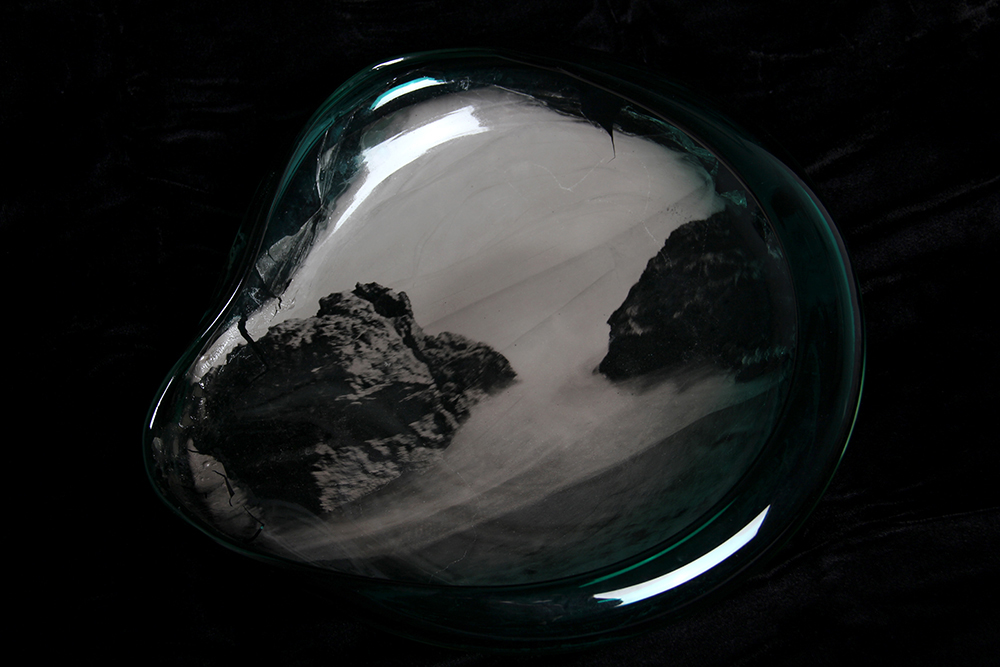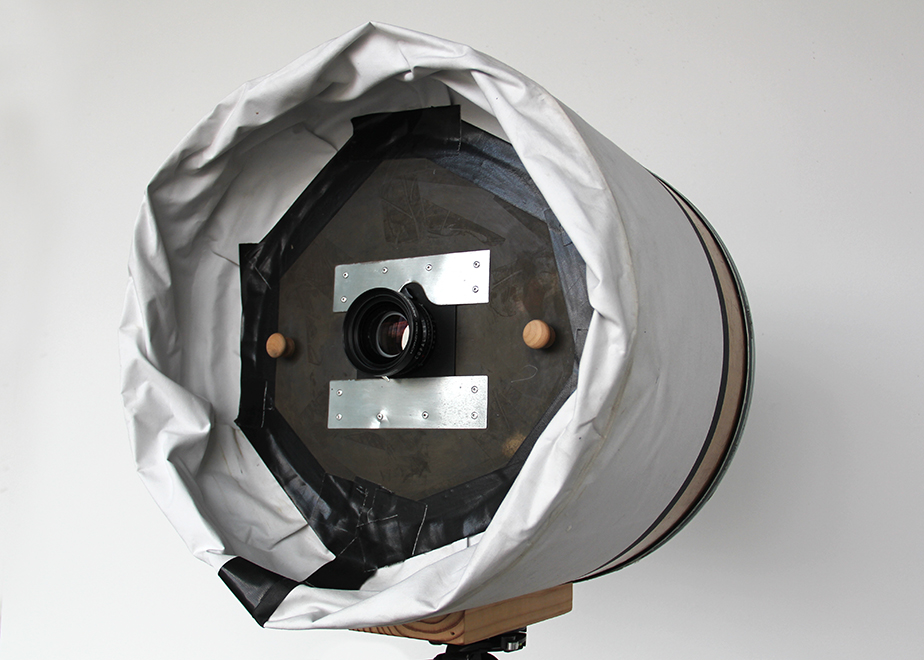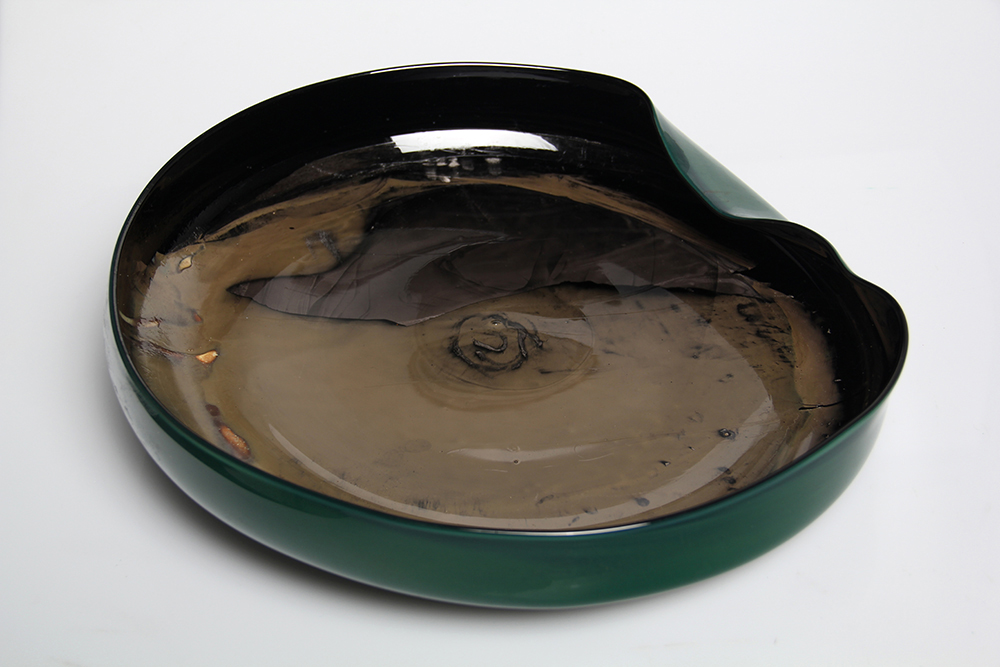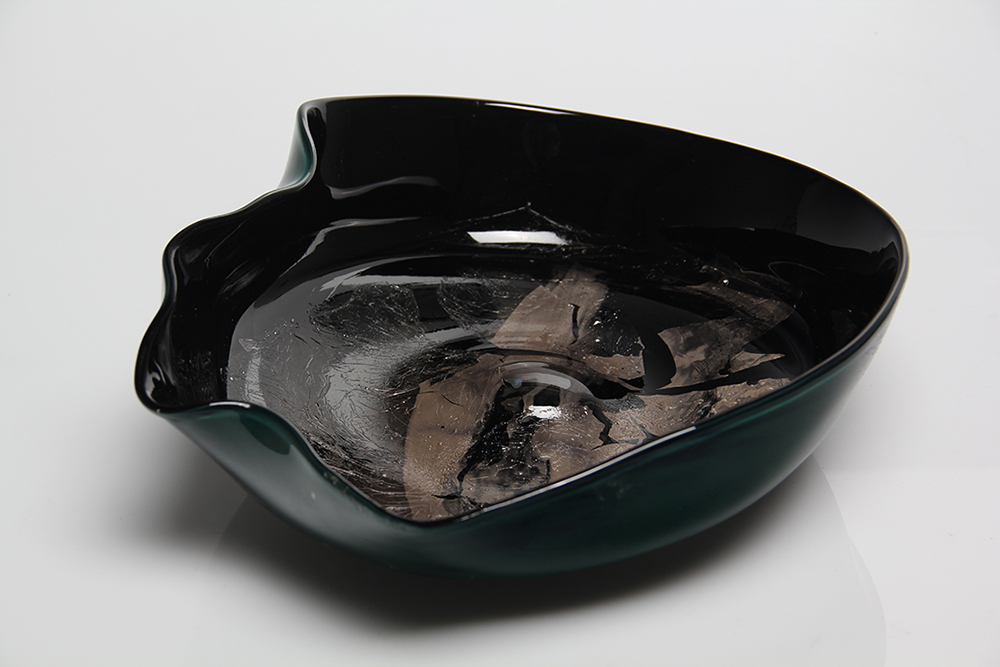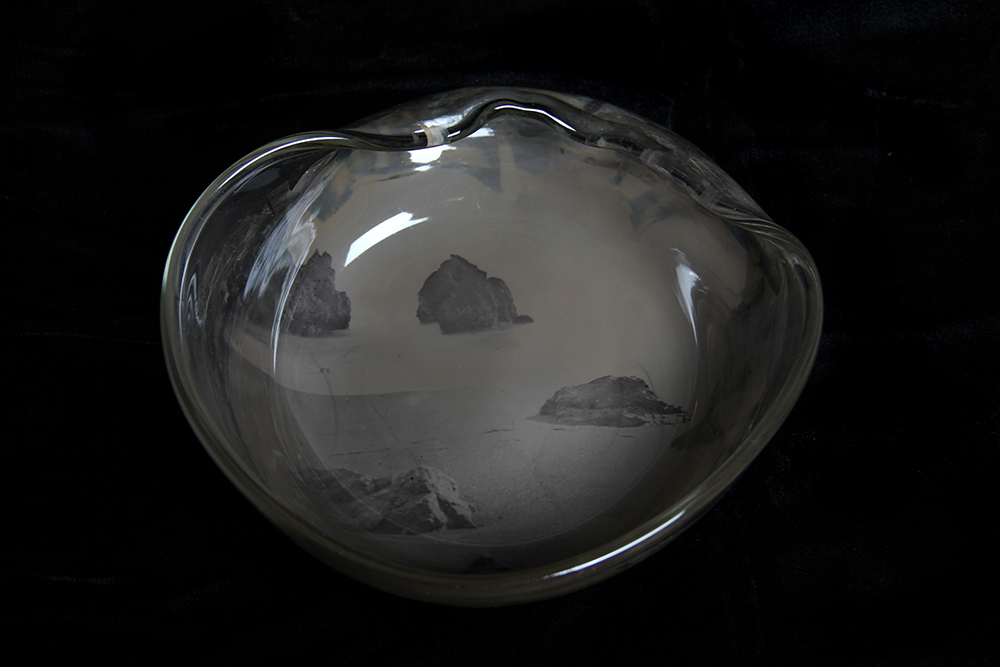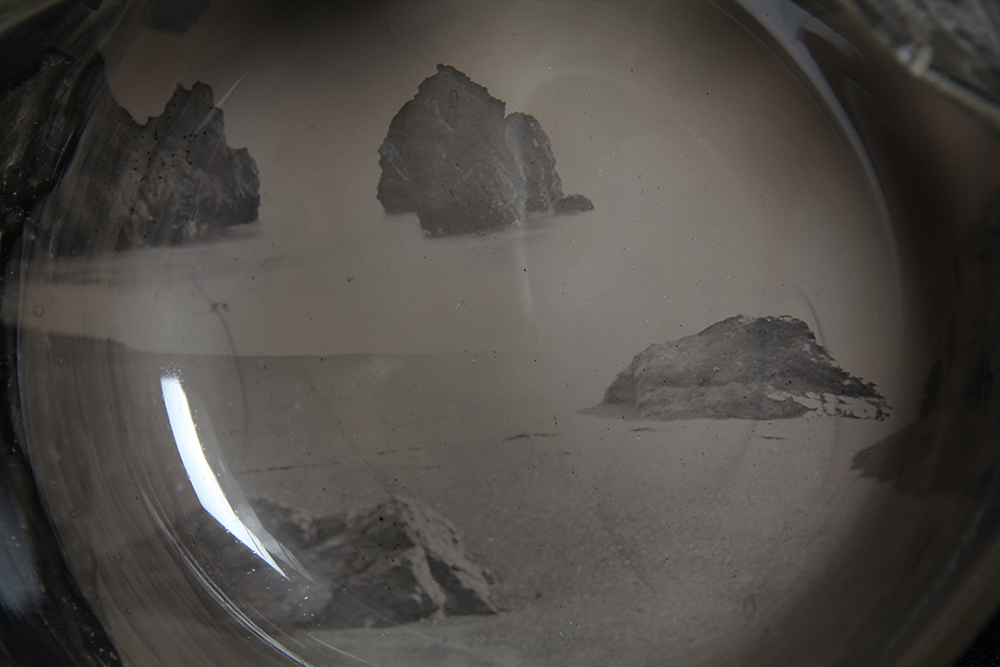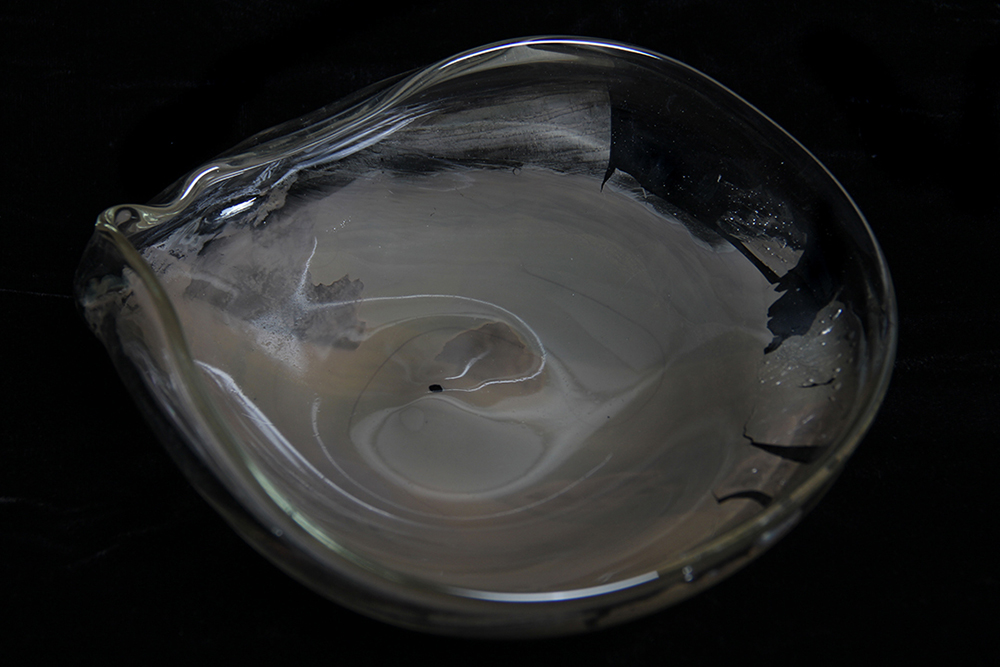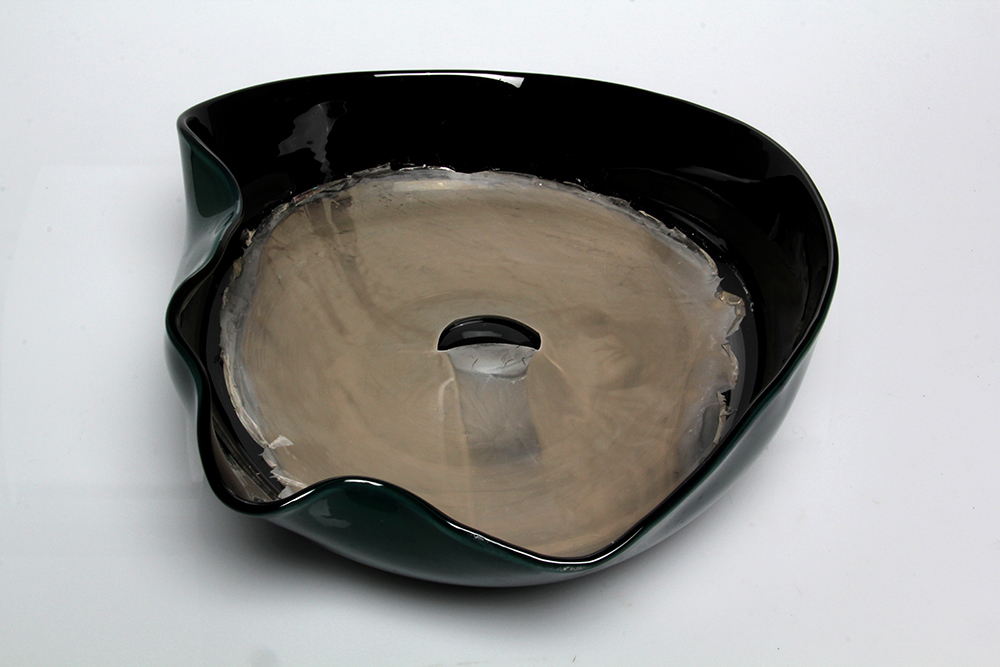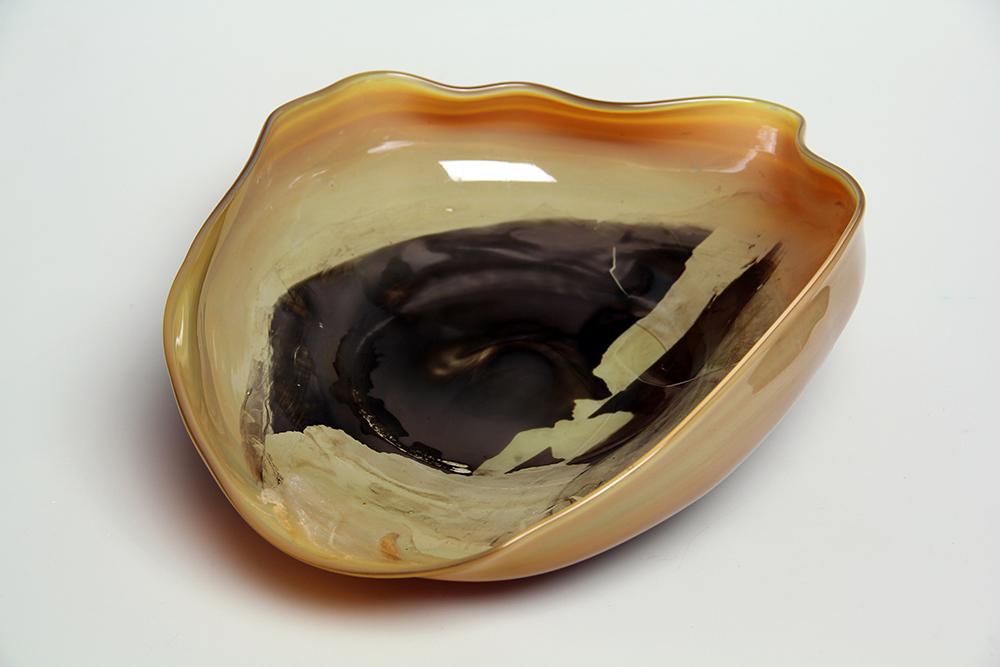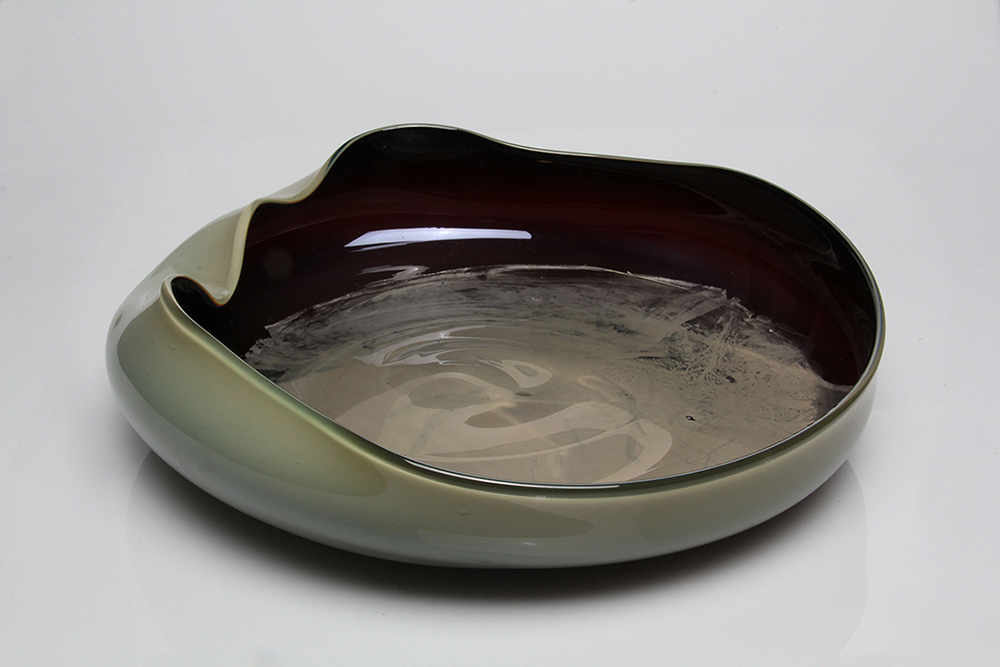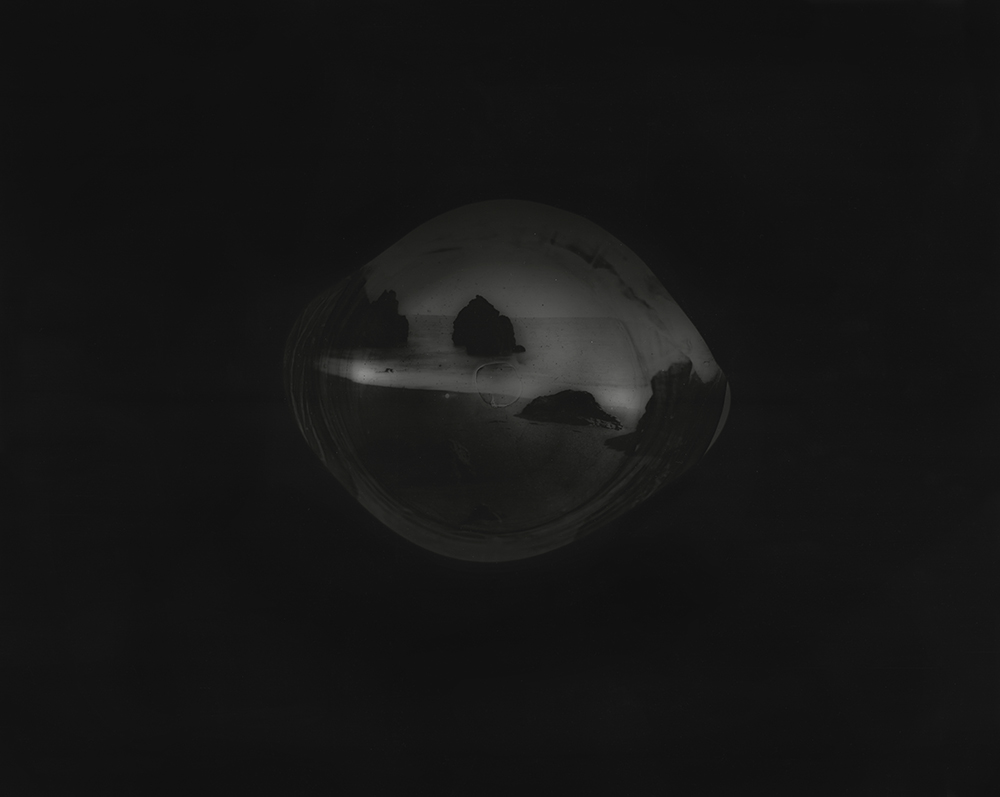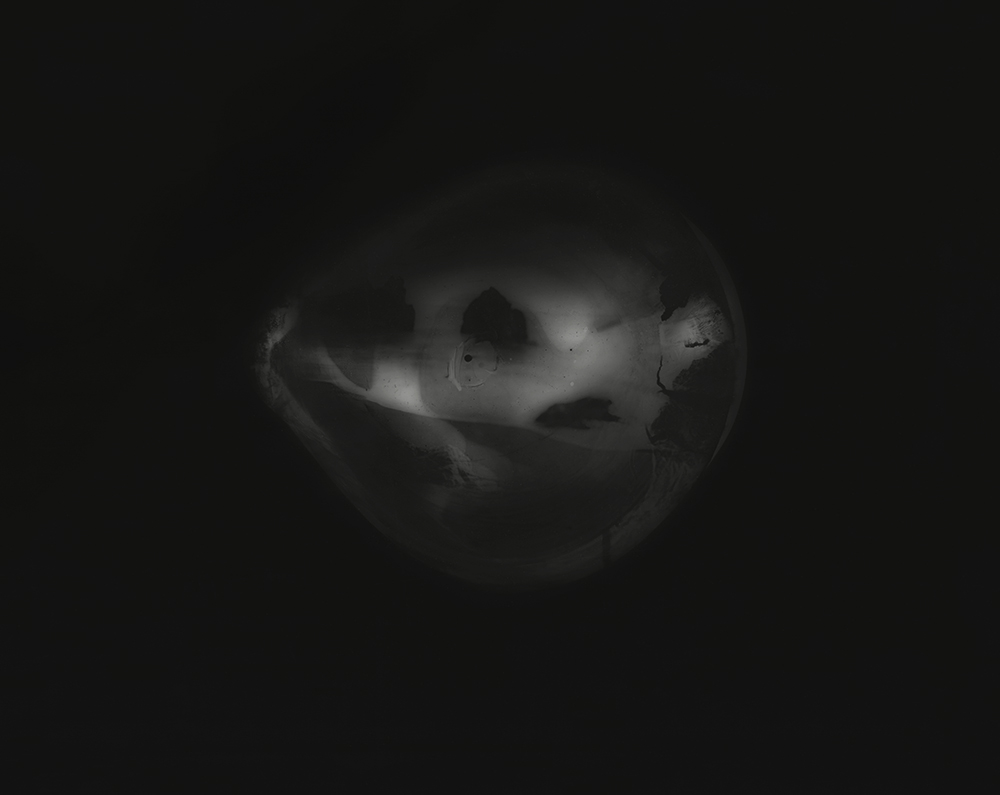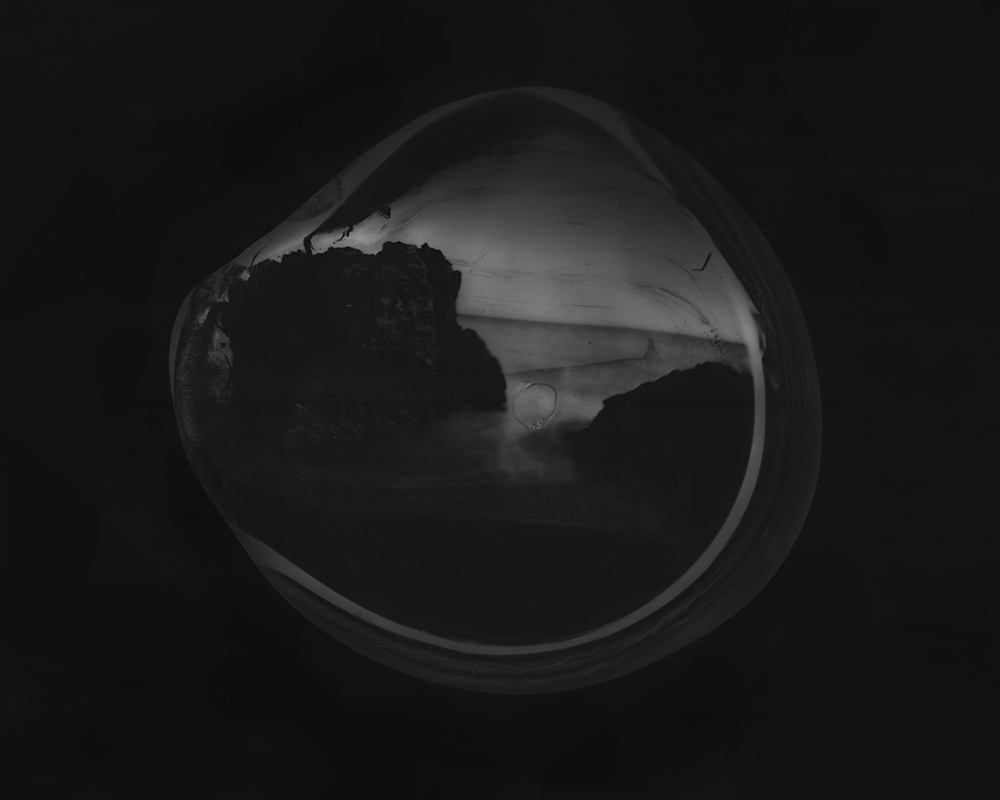Emma Jaubert Howell: Sand to Silver
They say when you pick up a seashell and put it to your ear you can hear the ocean. I would contend that when you look at one of Emma Jaubert Howell’s glass forms you can see the flow of the ocean too. The power of an inanimate object to connect us to the dynamism of nature can be mysterious and elusive. Emma’s melding of two art forms, glass blowing and photography, has succeed in harnessing that power. “I am interested in challenging the idea of a flat photographic image with this body of work by using a process that produces an image that creates a tangible experience for the viewer,” she says. Emma’s challenge is no easy feat. First she scouts landscape locations which she says “capture the natural flow of the water, and how it reacted with the rock formations.” Then Emma heads to the glass hot shop where her goal is to “create forms that have a natural look and flow to them that would mimic not only the flow within the water I would be photographing, but also the chemicals that I would be “flowing” over the surface by hand to make it light sensitive.” If making your own glass was not enough, Emma has built her own camera that would fit these glass forms and hauls it all out to the locations to make a site specific wet-plate collodion seascapes in the blowing sand and mist. The results are a timeless window on to the places that drew her.
Emma is preparing to graduate with her BFA from the Cleveland Institute of Art this Spring. This body of work, which she is aptly titling Sand to Silver, is her senior thesis project. Emma’s work is in the collection of the Mort Mandel Foundation Collection in Cleveland Ohio. She was also recently featured in Wired.com. We very much look forward to her future photographic efforts.
Sand to Silver
I am interested in challenging the idea of a flat photographic image with this body of work by using a process that produces an image that creates a tangible experience for the viewer. I am exposing site specific locations directly onto glass using the wet-plate collodion process. Large round glass blown forms, as a surface, have the capability to add a new understanding of the three-dimensional quality to the photographic image. By integrating these mediums of glass and photography, I construct a bridge between two and three-dimensional representations by using the traditions of light projected as a circular form.
I am offering a window through the glass to see not only the surface of what is being represented, but to see beyond the photograph. We all live in a tangible three-dimensional world where most people want to physically and visually experience what is around them. I am representing landscapes to achieve the sense of being in that actual location. I am doing this through a material that is transparent and reflective to make a visual relationship to the actual place and how we view it with our lens–the eye.
Emma has also used the completed glass forms in the same way as a glass plate negative and made contact prints. Examples are below.
Posts on Lenscratch may not be reproduced without the permission of the Lenscratch staff and the photographer.
Recommended
-
Ragne Kristine Sigmond: Portraits of Painterly LightDecember 2nd, 2025
-
Mary Pat Reeve: Illuminating the NightDecember 1st, 2025
-
Ricardo Miguel Hernández: When the memory turns to dust and Beyond PainNovember 28th, 2025
-
Pamela Landau Connolly: Columbus DriveNovember 26th, 2025
-
MATERNAL LEGACIES: OUR MOTHERS OURSELVES EXHIBITIONNovember 20th, 2025

